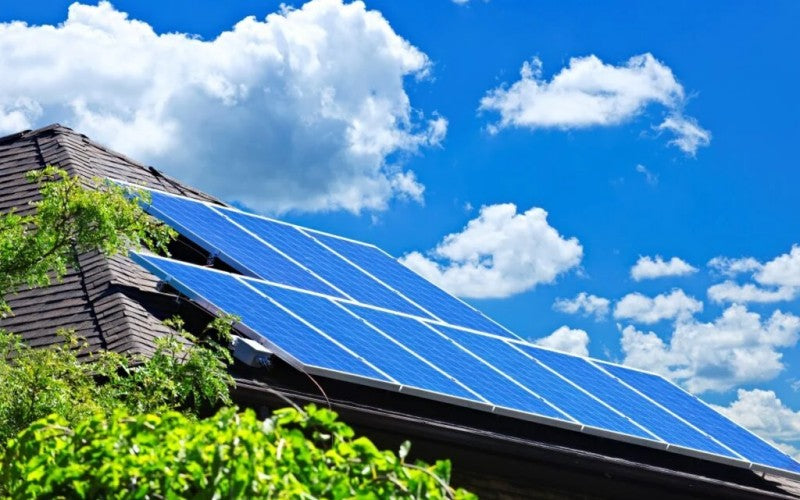
With the growing interest in sustainable energy solutions, many customers are turning to solar batteries as a way to store excess energy generated by their solar panels. Solar batteries play a crucial role in maximizing the benefits of solar energy systems by storing the surplus power for later use, even during cloudy days or nighttime. However, to make the most of these batteries, it's essential to understand how to determine when they are fully charged. In this blog post, we'll explore the various methods and indicators to help you confidently gauge when your solar batteries have reached their maximum capacity, ensuring that you harness every bit of that eco-friendly energy.
1. Understanding the Solar Battery Basics
Before diving into the charging process, let's have a quick refresher on solar batteries. Solar batteries, also known as deep-cycle batteries, are designed to store electrical energy in the form of chemical energy. When your solar panels produce more electricity than you consume, the surplus energy is channeled into these batteries for future use. As the sun sets or the weather turns gloomy, the energy stored in the batteries becomes your lifeline, allowing you to maintain a consistent power supply in your home.
2. Charging Process and Its Stages
The charging process of solar batteries goes through distinct stages, each characterized by specific voltage and current levels. Understanding these stages is crucial for determining when your solar batteries are fully charged.
A. Bulk Charging
Bulk charging is the initial stage of the charging process, where the battery is replenished with a high current to quickly raise its voltage. During this stage, the battery takes in as much energy as possible from the solar panels. The voltage increases rapidly until it reaches around 80% to 90% of its capacity.
To check if your solar batteries are in the bulk charging stage, you can use a solar charge controller that displays the current battery voltage. Some advanced charge controllers may also have LED indicators or digital screens to show the current charging stage.
B. Absorption Charging
Once the battery voltage reaches a specific threshold, typically 80% to 90%, the charger switches to the absorption charging stage. In this phase, the charging current gradually tapers off, and the voltage remains constant. The purpose of the absorption stage is to ensure that the battery is fully charged by giving it enough time to absorb the energy thoroughly.
Determining when your solar batteries are fully charged during absorption charging can be a bit more challenging. Many modern charge controllers have algorithms that automatically calculate the charging time based on the battery's capacity and the amount of energy generated by the solar panels. If your charge controller has a display, it might show an estimated time until the battery is fully charged.
C. Float Charging
Once the battery is fully charged, it enters the float charging stage. During this phase, the charge controller reduces the charging voltage to a lower level to maintain the battery's charge without overcharging it. Float charging is crucial for preventing the battery from degrading due to excessive charging.
3. Indicators of Fully Charged Solar Batteries
A. Voltage Levels
The most common method to check if your solar batteries are fully charged is by monitoring the battery voltage. When the battery reaches its full capacity, the voltage will stabilize at a specific level, which depends on the battery type and model. For lead-acid batteries, the fully charged voltage is usually around 12.7 to 12.8 volts. However, keep in mind that different battery chemistries may have different fully charged voltage levels.
B. Charge Controller Indicators
As mentioned earlier, many charge controllers come with LED indicators or digital screens that display the charging stage and battery status. During the absorption charging stage, the charge controller might show a countdown timer indicating the estimated time until the battery is fully charged. Additionally, some charge controllers have specific icons or notifications to indicate when the battery is fully charged.
C. Energy Monitoring Systems
If you have an energy monitoring system installed in your solar energy setup, it can provide valuable insights into your battery's charging status. These systems often come with smartphone apps or web interfaces that show real-time data on your solar energy production, consumption, and battery charge level. By checking this information, you can easily identify when your solar batteries reach their full capacity.
Conclusion
In conclusion, knowing when your solar batteries are fully charged is essential to optimize the performance and efficiency of your solar energy system. Understanding the different charging stages, voltage levels, and utilizing charge controller indicators and energy monitoring systems will empower you to harness solar power effectively and sustainably. By ensuring that your solar batteries are fully charged, you can confidently embrace renewable energy, reduce your carbon footprint, and take one step closer to a greener future.
So, whether you're a seasoned solar energy enthusiast or a newcomer to this eco-friendly technology, keep a close eye on your solar battery's charging process and embrace the sunny potential of solar power!


0 comments